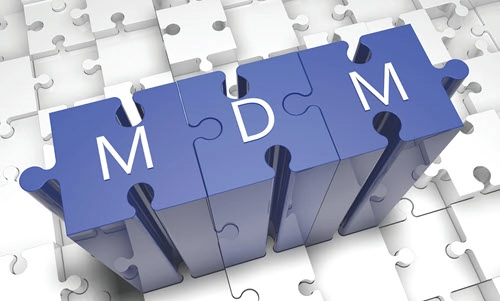EM Coding Alert
Read This Refresher to Fast-Track Your 2021 MDM Implementation
Don’t panic. Time is still on your side to master the big E/M coding change. If you haven’t started to get ready for the extensive changes to the office and outpatient E/M codes guidelines, the good news is that there is still time to get everything in place before Jan. 1, 2021. But time is rapidly running out. So, if you still feel like you’re behind the eight ball understanding the changes to 99202-99215 (Office or other outpatient visit for the evaluation and management of a new/established patient …) that are going to take effect in the New Year, read this guide and get up to speed quickly and effortlessly Prepare for New MDM Table, Time Chart As a refresher, coders will no longer use history and examination as factors in deciding overall E/M levels next year. For 2021 office E/M services, you’ll base the level of service on time or medical decision making (MDM) — not both — just one or the other. To ready your practice for the changes, it may be a good time to ensure that you understand what goes into the MDM selection. “Many practices may not understand that MDM is defined by three elements,” said Nancy Clark, CPC, COC, CPB, CPMA, CPC-I, COPC, senior manager in the Healthcare Services Group at EisnerAmper in Iselin, New Jersey. Those are the number/ complexity of problems addressed during the encounter; the amount/complexity of data reviewed/analyzed; and the risk of complications/morbidity/mortality of patient management decisions based on today’s visit associated with the patient’s problem, diagnostic procedure, or treatment. (Note that this reflects the wording for 2021, which is slightly revised from the current definition of MDM components.) Because these concepts aren’t necessarily aligned with or integral to a clinician’s thought process or documentation methodology, Clark advises medical practices to perform a small independent baseline review of at least 10 randomly selected medical records. “Ideally, this should be performed by a certified coder who has experience with both auditing and instructing practitioners,” she notes. This type of internal review can offer the practice an analysis of the provider’s documentation in the style in which they’re most comfortable, she says. “The coder can identify to the provider what the documentation reflects for each of the three MDM elements. It’s kind of a reverse process. Let the provider document how they’re comfortable and then let a professional extract where these three components stand, and then everyone can understand the relationship between documentation and MDM and how it contributes to the code.” You’ll Still Need to Meet at Least 3 MDM Levels Keep in mind that you’ll have a new MDM table next year, which you should get to know now, Clark advises. “Don’t wait until January 1 to start to learn these,” she says. In some ways, the new CPT® table (which you can find at www.ama-assn.org/system/files/2019-06/cpt-revised-mdm-grid.pdf) is similar to its CMS counterpart. For example, under CPT®, E/M levels 99203 and 99213 (Office or other outpatient visit for the evaluation and management of a new/established patient …) will still require a low level of MDM. That level will also still be determined by meeting or exceeding two of the three elements of MDM. Additionally, the first of those elements, the old CPT® “Number of diagnoses or management options,” has merged with CMS’ “Present problems” to become “The number and complexity of problems addressed.” For 99203/99213, that will still mean a provider addresses either two or more self-limited or minor problems; one stable chronic illness; or one acute, uncomplicated illness or injury. … With 2 Different Elements The comparisons between the two tables end with the other two elements, however. In the eyes of many coders, the most complex change falls under the “Amount and/or complexity of data to be reviewed and analyzed,” element, which has been completely redefined. Each level has two to three categories, each one comprised of various combinations of tests, documents, interpretations, and so on. Key Terms Are Specified … In the 2021 E/M overhaul, the AMA has also attempted to clear up confusion caused by vague or questionable terminology. For example, in its MDM table, CPT® has introduced the term “independent historian,” which it defines as “an individual (e.g., parent, guardian, surrogate, spouse, witness) who provides a history in addition to a history provided by the patient who is unable to provide a complete or reliable history (e.g., due to developmental stage, dementia, or psychosis) or because a confirmatory history is judged to be necessary.” … and Ambiguous Terms Receive Precise Definitions Additionally, CPT® has tried to shine a light on terms that have been traditionally hard to pin down. So, CPT® has clarified the term “morbidity” as “a state of illness or functional impairment that is expected to be of substantial duration during which function is limited, quality of life is impaired, or there is organ damage that may not be transient despite treatment.” Such definitions are likely to make it much easier for the coder/auditor to clearly educate physicians and apply the MDM guidelines to the auditing process. And, hopefully, they will also make these 2021 revisions to office and outpatient E/M levels easy to implement when they take effect on January 1. (For the full list of CPT® outpatient E/M and prolonged services code and guideline changes, go to www.ama-assn.org/system/files/2019-06/cpt-office-prolonged-svs-code-changes.pdf).

EM Coding Alert
- Countdown to 2021:
Read This Refresher to Fast-Track Your 2021 MDM Implementation
Don’t panic. Time is still on your side to master the big E/M coding change. [...] - Telehealth:
Pay Attention to These Details, Prepare for Post-COVID Audits
Check for time, audio/video documentation to keep telehealth claims clean. From a medical billing and [...] - Compliance:
Want to Get More Specific With Your Telehealth Documentation? Here’s How.
Hint: Don’t let the time tick away. In the previous article, we discussed some of [...] - You Be the Coder:
Establish the Real Status of These New Patients
Question: We are aware of the new patient rules for E/M visits, but this situation [...] - Reader Questions:
Evaluate This Question, Manage Your Answer for 2021 E/M Services
Question: Is it true that E/M coding for office and outpatient visits will be based [...] - Reader Questions:
Combine These E/M Encounters at Your Peril
Question: One of my physicians would like to see new patients over the course of [...] - Reader Questions:
Modify Your Answer to This Preventive Bundling Question
Question: The patient underwent 99395 25, 81000, 58301-59, 99406 on the same day. How should [...] - Reader Questions:
Pay Attention to This Follow-Up Medication Encounter
Question: What codes should we use for attention deficit disorder (ADD)/attention-deficit hyperactivity disorder (ADHD) medication [...]

